The Muktinath Temple lies in the Himalayan ranges of Nepal and is a holy pilgrimage for Hindus and Buddhists alike. It is located 3,710 metres above sea level in Mustang District and serves as a testament to the spiritual harmonies between these two major religions. The breathtaking setting amidst snow-capped peaks and rugged landscapes only adds to the mystique that draws thousands of devotees and adventurers every year. There is no better example of religious unity than Muktinath, with its blend of natural beauty and profound spirituality. It is a must-visit for adventure and calm seekers amid the heart of the Himalayas.
Location
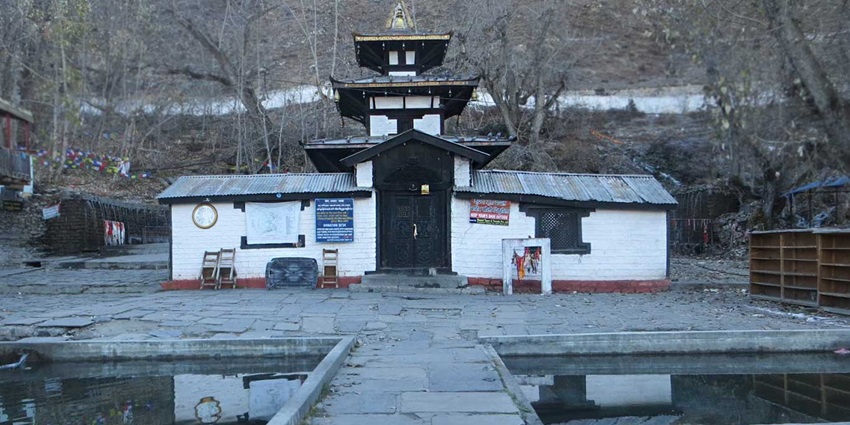
Photo: Binod Basnet / Wikimedia Commons
This temple is in the Muktinath Valley, part of the Annapurna Conservation Area in Nepal’s Mustang District. It lies at the foot of the Thorong La mountain pass, a key point on the popular Annapurna Circuit trek. Muktinath Temple address is at a high-altitude location and offers stunning panoramic views of the Dhaulagiri and Annapurna mountain ranges, creating a dramatic and awe-inspiring backdrop for this spiritual sanctuary.
Suggested Read: Nepal Nightlife For Singles
How to Reach Muktinath Temple
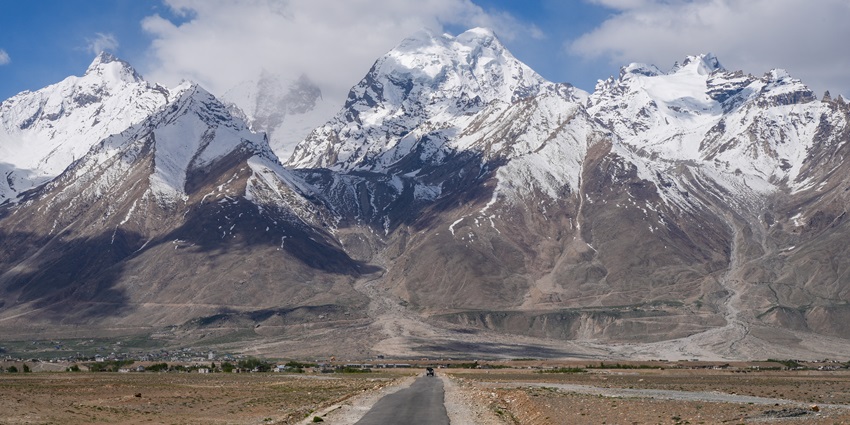
Photo: Binod Basnet / Wikimedia Commons / Image For Representation Only
Reaching Muktinath Temple is an adventure in itself, with several options available depending on time, budget, and desired level of trekking:
By Air: The quickest route is to fly from Kathmandu or Pokhara to Jomsom, then take a jeep or bus to Muktinath. This option offers spectacular mountain views during the flight and a taste of the rugged Himalayan landscape on the road journey.
By Trekking: Many pilgrims and trekkers choose to reach Muktinath on foot as part of the Annapurna Circuit trek. This multi-day journey allows for proper acclimatisation and a deeper connection with the landscape and local culture.
By Bike: Adventure enthusiasts can rent motorcycles in Kathmandu or Pokhara and ride to Muktinath. This option requires experience with mountain roads and changing weather conditions.
By Bus: For budget travellers, regular bus services run from Kathmandu and Pokhara to Jomsom, from where local transport can be arranged to Muktinath.
Places To Visit Around Muktinath Temple
While Muktinath Temple is the main attraction, the surrounding area offers several other sites of interest that enhance the pilgrimage or trekking experience.
1. Jwala Mai Temple
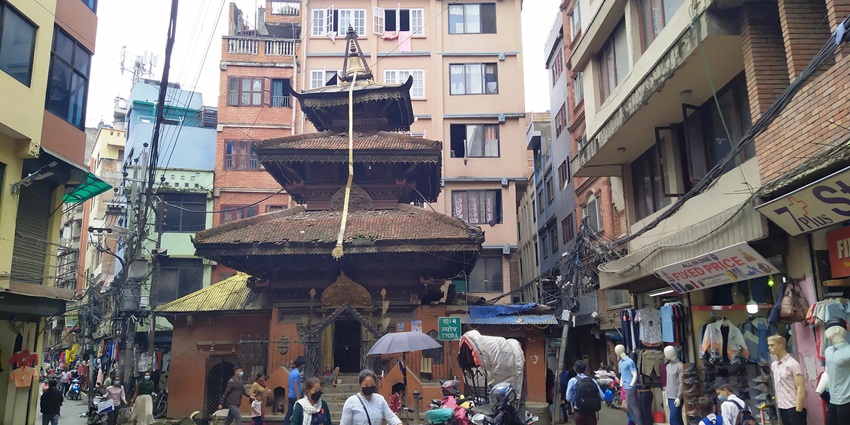
Photo: Radosław Botev / Wikimedia Commons
Located within the Muktinath temple complex, Jwala Mai Temple is dedicated to the goddess of fire. Its most fascinating feature is the eternal flame that burns on water, fed by natural gas seeping from the ground. This phenomenon is considered a manifestation of Jwala Mai and is deeply revered by pilgrims. The temple’s unique blend of natural elements (fire emerging from water) symbolises the harmony of opposing forces in nature and spirituality, making it a must-visit site within the Muktinath complex.
Suggested Read: Adventure Sports In Nepal For Every Adrenaline Junkie
2. 108 Water Spouts
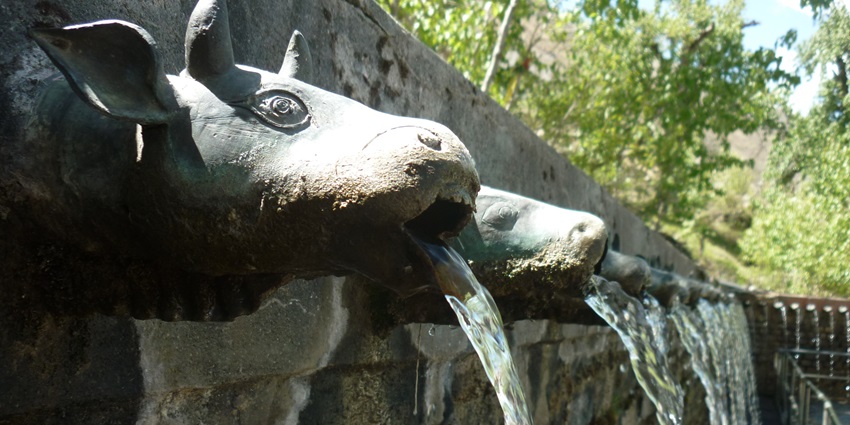
Photo: Felix Dance / Wikimedia Commons
A distinctive feature of the Muktinath complex is the series of 108 water spouts arranged in a semicircle. These spouts, shaped like bullheads, provide holy water for pilgrims to bathe in, and they are believed to wash away sins and bring salvation. The number 108 holds special significance in both Hindu and Buddhist traditions, representing the 108 forms of the Mother Goddess in Hinduism and the 108 feelings or defilements in Buddhism. This sacred bathing ritual is a central part of the pilgrimage experience, offering both spiritual purification and a test of endurance in the cold mountain water.
3. Shaligram Ammonite Fossils Site
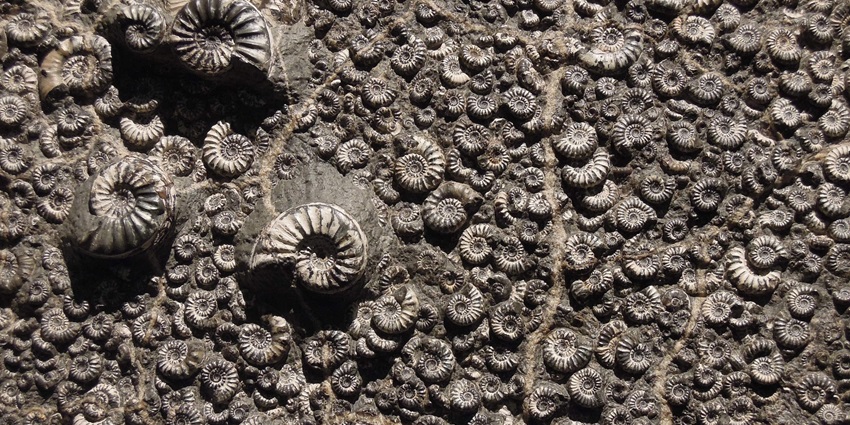
Photo: Laurentarroues / Pixabay / Image For Representation Only
Near Muktinath, along the banks of the Kali Gandaki River, lies a site famous for Shaligram stones, The ammonite fossils are considered sacred in Hinduism as representations of Lord Vishnu. These black, spiral-shaped fossils are millions of years old and formed when the Himalayan region was once a seabed. Visitors can explore the riverbed and potentially find these ancient fossils, though removal is prohibited. The site offers a unique blend of geological wonder and spiritual significance, attracting both scientists and pilgrims alike.
Suggested Read: Chitwan Jungle Safari
4. Marpha
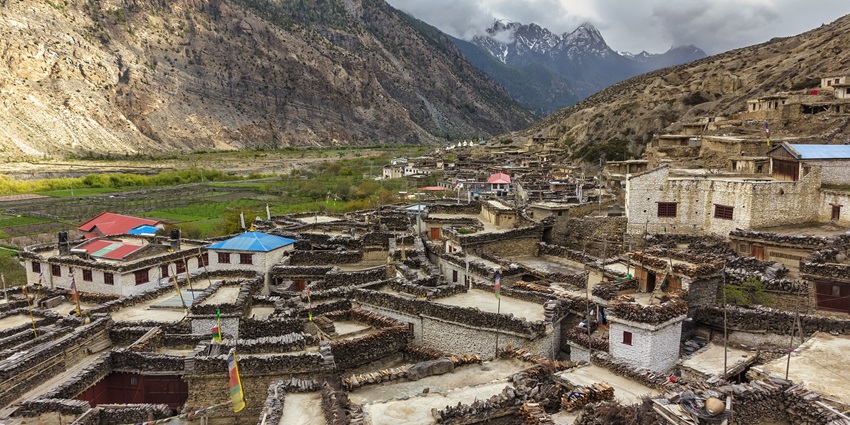
Photo: balajisrinivasan / Pixabay
About 30 kilometres from Muktinath, Marpha is a picturesque village known for its white-washed houses, narrow stone-paved streets, and famous apple orchards. This charming settlement offers visitors a glimpse into traditional Thakali culture and architecture. The village is renowned for its apple products, including fresh apples, dried apple slices, and the potent local apple brandy. A stroll through Marpha’s winding alleys, a visit to its ancient monastery, and a sampling of its apple delicacies provide a perfect cultural complement to the spiritual experience of Muktinath.
5. Kagbeni
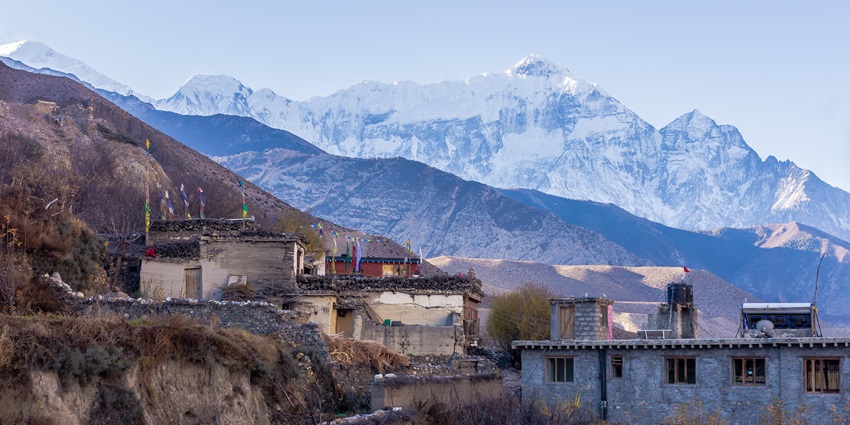
Photo: Bijay Chaurasia / Wikimedia Commons
Situated at the entrance to the restricted Upper Mustang region, Kagbeni is a mediaeval village that offers a glimpse into traditional Tibetan culture. Its centuries-old monastery, narrow alleys, and stunning views of the Kali Gandaki Gorge make it a worthwhile stop. The village serves as a time capsule of Tibetan-influenced architecture and lifestyle, with its flat-roofed houses, prayer wheels, and fluttering prayer flags. Kagbeni’s strategic location at the junction of ancient trade routes adds to its historical significance, making it an intriguing destination for those interested in the region’s rich cultural heritage.
Suggested Read: Jungle Safari In Nepal
Where To Stay
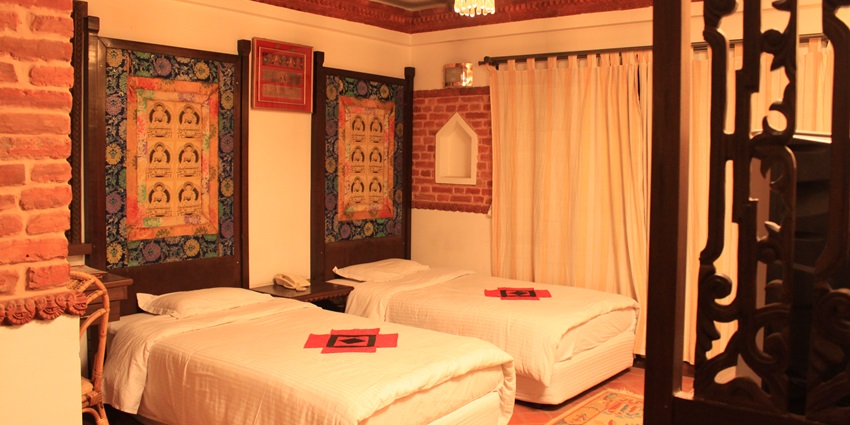
Photo: Mallaclassicroom / Wikimedia Commons
The area around the temple offers a range of accommodation options to suit various budgets and preferences. For those seeking comfort, the Royal Mustang Resort provides modern amenities blended with traditional Mustang architecture. Budget-conscious can opt for Hotel Muktinath, which provides basic amenities in a convenient location. Many guesthouses and teahouses in nearby villages like Ranipauwa offer simple but cosy accommodations. These local stays provide an authentic experience, often including home-cooked meals and insights into local life. It’s advisable to book accommodations in advance, especially during peak pilgrimage and trekking seasons.
Where To Eat
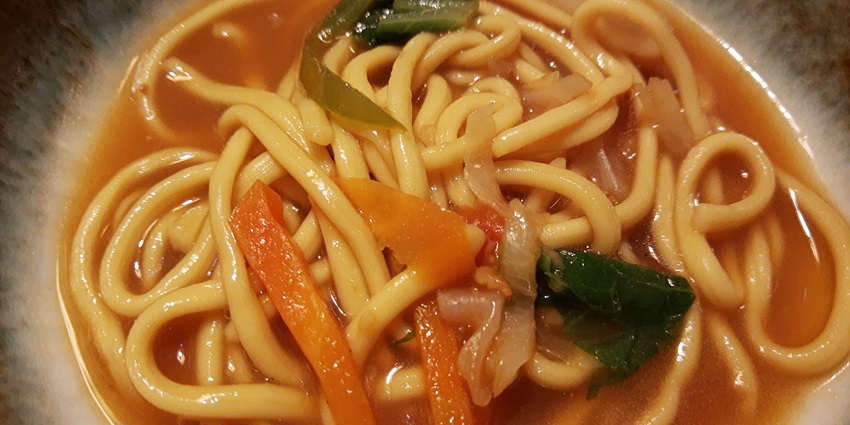
Photo: Scudsvlad / Wikimedia Commons / Image For Representation Only
The culinary scene around Muktinath offers a mix of local flavours and traveller-friendly options. The Bob Marley Restaurant is a popular spot serving a variety of Nepali, Tibetan, and Western dishes. For an authentic taste of the region, the Muktinath Thakali Kitchen specialises in traditional Thakali cuisine with flavourful dishes like dal bhat and local yak cheese. Coffee enthusiasts can visit Himalayan Java Coffee. These local eateries often offer a chance to try regional specialities like Thukpa and Tibetan bread. For those with dietary restrictions, communicate your needs clearly, as options may be limited in this remote area.
Suggested Read: Skydiving In Pokhara
Best Time To Visit
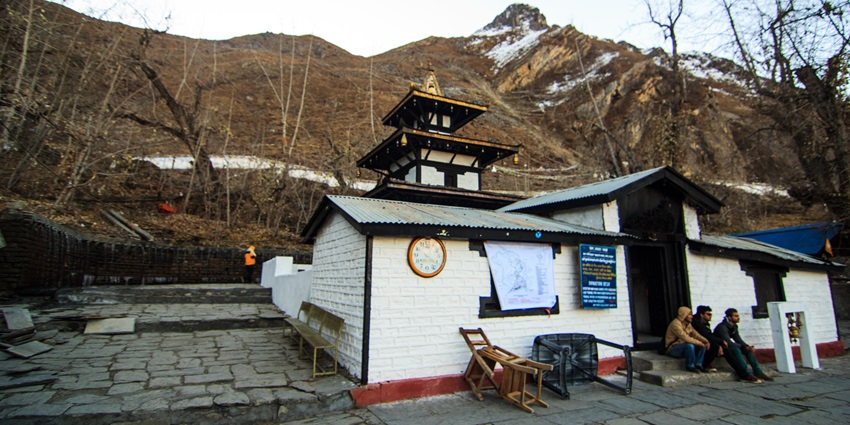
Photo: Prytomb / Wikimedia Commons
The best time to visit the temple largely depends on your priorities and weather conditions. Spring, from March to May, offers mild weather and clear skies, ideal for trekking and sightseeing. From September to November, autumn is the most popular season for visitors. It provides stable weather, clear mountain views, and comfortable temperatures, making it perfect for pilgrimage and trekking activities. Winter can be challenging from December to February due to cold temperatures and possible snowfall.
Other Factors To Consider
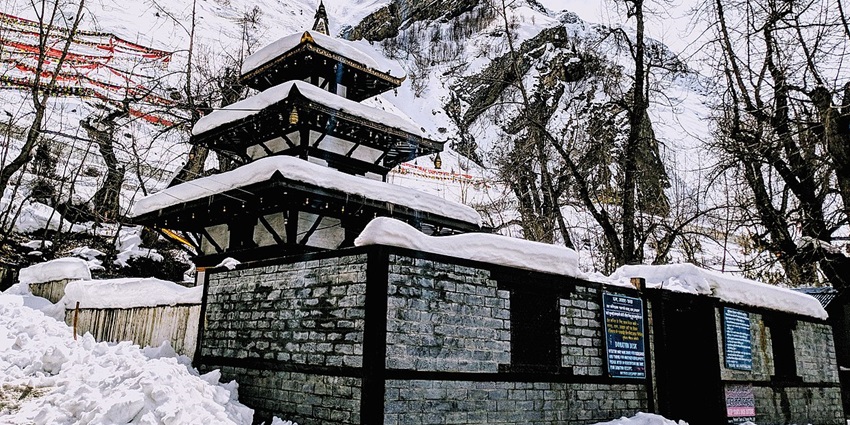
Photo: Ironicfreak / Wikimedia Commons
Average Cost Of The Trip
The cost of a trip to the temple can vary widely depending on the mode of transportation and length of stay. Budget travellers can expect to spend around $30 to $50 (₹2500-₹4200) per day and mid-range travellers from $70 to $100 (₹5800-₹8300) per day for basic accommodation in guesthouses or teahouses, simple meals, and local transportation. Luxury travellers could spend $150 (₹12,500) or more per day, staying in the best available hotels in the region, hiring private guides and porters, and possibly including helicopter tours for a truly spectacular view of the Himalayas.
Tips For Travellers
- Due to the high altitude, it takes time to acclimate to prevent altitude sickness. Ascend slowly if trekking and stay well-hydrated.
- Muktinath is a sacred site, so dress modestly and be respectful of religious practices.
- Ensure you have the Annapurna Conservation Area Permit (ACAP) and TIMS card for trekkers.
- Weather can change quickly in the mountains. Bring warm clothes, good hiking shoes, and sun protection.
- ATMs are limited in the region. Carry enough cash for your entire trip.
- While English is spoken in tourist areas, but learn a few basic Nepali phrases.
- Always ask permission before photographing people, especially inside the temple complex.
Suggested Read: Enjoy Trekking In Nepal
Visiting Muktinath Temple is a profound spiritual experience, offering peace and blessings in a serene Himalayan setting. Whether you’re seeking spiritual solace or an adventure in the mountains, Muktinath has something for everyone. To make your journey hassle-free and memorable, plan your trip with TripXL, where expert guidance ensures every detail is taken care of. Book now and embark on a journey of a lifetime with TripXL!
Cover Photo: Faj2323 / Wikimedia Commons


 WhatsApp
WhatsApp
 Twitter
Twitter









